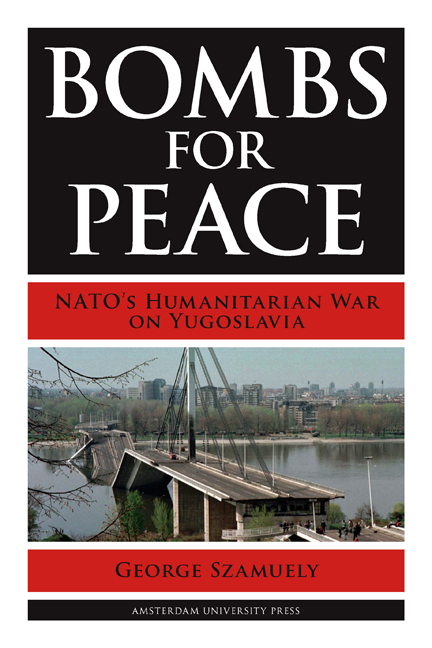Book contents
- Frontmatter
- Dedication
- Contents
- Acknowledgements
- Introduction
- 1 Yugoslavia: Destroying States for Fun and for Profit
- 2 In Search of the Good War: Bosnia: April 1992 to May 1993
- 3 Peacemaking v. Humanitarianism: Bosnia and Croatia: June 1993 to December 1995
- 4 Humanitarianism Fulfilled: Bosnia’s Unsafe Areas
- 5 Kosovo: The Denial of Sovereignty
- 6 Kosovo: The set-up
- 7 Kosovo: Standing up to the Yugoslav Goliath
- Conclusions: Ensuring Success by Lowering Standards
- Notes
- Select Bibliography
- Index
4 - Humanitarianism Fulfilled: Bosnia’s Unsafe Areas
Published online by Cambridge University Press: 12 February 2021
- Frontmatter
- Dedication
- Contents
- Acknowledgements
- Introduction
- 1 Yugoslavia: Destroying States for Fun and for Profit
- 2 In Search of the Good War: Bosnia: April 1992 to May 1993
- 3 Peacemaking v. Humanitarianism: Bosnia and Croatia: June 1993 to December 1995
- 4 Humanitarianism Fulfilled: Bosnia’s Unsafe Areas
- 5 Kosovo: The Denial of Sovereignty
- 6 Kosovo: The set-up
- 7 Kosovo: Standing up to the Yugoslav Goliath
- Conclusions: Ensuring Success by Lowering Standards
- Notes
- Select Bibliography
- Index
Summary
On April 17, 1993, the u.n. Security Council declared the town of Srebrenica a “safe area.” According to the u.n. resolution implementing this decision, the town and its surroundings were to “be free from any armed attack or any other hostile act.” The Security Council took this action without consulting the co-chairmen of the icfy who were at that moment seeking to persuade the warring parties to accept the Vance-Owen plan. Less than three weeks later, on May 6, the Security Council extended the “safe area” concept to an additional five towns: Sarajevo, Tuzla, Bihać, Goražde, and Žepa.
Quite what the safe-area policy was supposed to achieve was deliberately left unclear. If safe areas were truly civilian centers – gatherings of desperate refugees, as portrayed in the media – then they already enjoyed protection under international law. If, however, they were not exclusively civilian – if, in other words, they were also gatherings of armed forces – then an internationally imposed restriction on one combatant would give the other combatant an unfair advantage. If enforcement of the safe area regime were to become the responsibility of nato, then the Western powers would have found a back-door way of getting involved on the Muslim side in the war in Bosnia.
The model for the “safe areas” was Iraq. In 1991, in the aftermath of the first Gulf War, the United Nations established two no-fly zones: one in the north to protect the Kurds, and one in the south to protect the Shiites. In the aftermath of Iraqi defeat, Kurds in the north and Shiites in the south had risen up against Saddam. Baghdad used force to suppress the uprisings. The u.n. Security Council responded by passing Resolution 688, adopted on April 5, 1991, demanding that Iraq “end this repression” and “allow immediate access by international humanitarian organizations to all those in need of assistance.” The aim was to weaken the central government of Saddam Hussein. Washington and London seized on this resolution as justification for the imposition and military enforcement of two no-fly zones. Resolution 688, however, made no mention of “no-fly zones” and most certainly did not authorize any state to bomb Iraq to enforce them.
- Type
- Chapter
- Information
- Bombs for PeaceNATO's Humanitarian War on Yugoslavia, pp. 275 - 328Publisher: Amsterdam University PressPrint publication year: 2013



